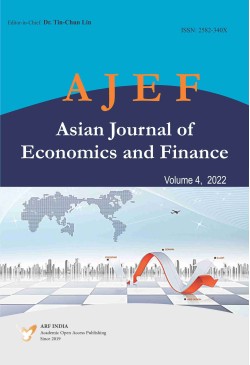
Asian Journal of Economics and Finance
Frequency :Quarterly
ISSN :2582-340X
Peer Reviewed Journal
Return on Investment: A Comparison Between Venture Capital Investment Funds and the Venture Builder Approach
Measuring Impact of CAMELS Model on Financial Performance of Indian Commercial Banks
Economic Growth and Public Expenditure on Human Capital Formation in India: An Econometric Investigation
Financial Inclusion and Economic Growth in Nigeria (1991-2021)
Decoding the Indian Economic Slowdown: An Insight into the Factors behind the Stumble
Causality between Carbon Dioxide Emission and Agriculture Production: Evidences from India
The Repercussions of Ukraine’s Crisis on Food Security and the Possibility of Avoiding a Global Food Crisis
Determinants of Earnings Quality of Listed Consumer Goods Firms in Nigeria
A Discourse on Role of Digital Payments Adoption to Drive MSMEs Towards the Attainment of Sustainable Advantage
Keywords: Digital Payments, Sustainable Development Goals, MSMEs, Innovation
Harleen Kaur & Priya Devi (2023). A Discourse on Role of Digital Payments Adoption to Drive MSMEs towards the Attainment of Sustainable Advantage. Asian Journal of Economics and Finance. 5(2), 249-265. https://DOI:10.47509/AJEF.2023.v05i02.09